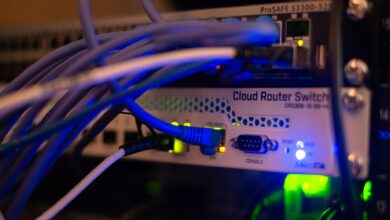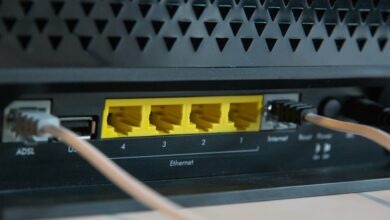Network Testing | Best Tools

What if your network could deliver flawless performance, no matter the demand? In today’s digital landscape, Network Testing is essential for achieving this ideal. With every packet of data, the stability, speed, and security of your network are on the line. By using advanced diagnostic tools, Network Testing sheds light on the unseen issues that can disrupt connectivity, identifying crucial metrics like latency, packet loss, and bandwidth capacity. For anyone looking to secure a network that is fast, reliable, and resilient, understanding the best tools for Network Testing is the key to unlocking unparalleled network performance.
Table of Contents
Network Testing Definition
Network Testing is the meticulous process of assessing and evaluating the health, performance, and security of a network. This involves scrutinizing every element of the network—from hardware to protocols and data paths—to ensure seamless connectivity and optimal data transfer rates. Through Network Testing, engineers can identify latent issues like bottlenecks, latency, packet loss, and bandwidth limitations that might otherwise go unnoticed. By simulating real-world conditions, Network Testing reveals how a network behaves under varying loads, helping administrators pinpoint and resolve potential failures before they impact users. Ultimately, Network Testing is crucial for maintaining reliability, enhancing security, and optimizing the efficiency of any digital infrastructure, from corporate environments to large-scale service providers.
In the world of digital transformation, Network Testing is the silent guardian that ensures performance, security, and reliability are never compromised.
Why Network Testing Is Important
- Identify Performance Issues: Network Testing helps detect bottlenecks, latency spikes, and packet loss that can degrade network quality and lead to poor user experiences.
- Enhance Reliability: Regular testing minimizes downtime by allowing network administrators to identify and resolve issues before they impact users, ensuring consistent connectivity.
- Strengthen Security: By uncovering potential vulnerabilities, Network Testing enables organizations to implement security measures proactively, protecting sensitive data from cyber threats.
- Optimize for Peak Usage: Testing simulates peak traffic and stress conditions, allowing networks to be optimized for high-demand scenarios, ensuring stability even under heavy loads.
- Support Operational Efficiency: Testing ensures all network components function cohesively, reducing disruptions and enhancing productivity across the organization.
- Boost User Satisfaction: With optimized performance and minimal downtime, Network Testing directly contributes to a smoother, more reliable experience for users.
Network Testing Tools
1- Testing Latency and Packet Loss with Ping
Suppose a network administrator wants to test the connectivity and quality of a network link between their office and a remote server. By using the ping command, they can quickly assess latency and packet loss.
For example:

In this command:
-c 10specifies that 10 packets should be sent to the target (example.com).
After running the command, the output might look like this:

In this example:
- The average latency (average RTT) is 20.3 ms, indicating a relatively low latency suitable for most tasks.
- 0% packet loss shows that all packets successfully reached the destination and returned, suggesting a stable connection.
If the results showed high latency (e.g., average RTT of 200 ms) or significant packet loss (e.g., 30%), this could indicate network congestion, inefficient routing, or hardware issues that need to be investigated.
2- Traceroute
Traceroute is a powerful tool used to map the journey of data packets across a network, providing detailed insights into the path they take from the source to the destination. Unlike ping, which only measures round-trip time to a single destination, traceroute shows the series of intermediate routers or hops the packet traverses on its way to the target.
When you run traceroute, it sends a sequence of packets to the destination, incrementing the Time-to-Live (TTL) value with each attempt. TTL dictates the maximum number of hops a packet can make before being discarded. As the TTL increases, traceroute records the IP address and response time of each hop, revealing the route’s path and pinpointing potential delays.
For example, running the following command:

Might return results like:

Here, each line corresponds to a hop, with the IP address of the router and the time it took for the packet to travel there. If there is a significant delay or packet loss on a particular hop, it may indicate congestion or routing issues within the network. Traceroute is especially useful for diagnosing network slowdowns, as it provides a clear map of where performance issues occur.
3- Path Analysis
Path Analysis is a critical component of Network Testing that provides a detailed, real-time view of how data travels across a network. Unlike basic tools that simply trace hops, path analysis uncovers the performance characteristics of each segment in the journey. It reveals not only the path data takes but also key metrics such as latency, packet loss, and jitter, which can significantly impact network performance. By visualizing these paths, administrators can pinpoint problem areas, like congested routers or misconfigured routing protocols, that might otherwise go unnoticed.
This is particularly valuable in complex network environments where multiple routes or cross-border links are involved. Network Testing through path analysis empowers organizations to identify inefficiencies, optimize traffic flows, and troubleshoot with precision, ensuring a more reliable and faster network. With the ability to break down every step of the journey, path analysis provides actionable insights that are essential for maintaining a high-performance network infrastructure.
4- DNS Testing
DNS Testing is an essential part of Network Testing, ensuring that domain name resolution is functioning properly within a network. The Domain Name System (DNS) is responsible for translating human-readable domain names into IP addresses, allowing users to access websites and services. However, when DNS issues arise—such as slow resolution or incorrect mappings—it can cause significant disruptions. Network Testing tools help diagnose these problems by querying DNS servers and measuring the response times, identifying any delays or failures in the resolution process. DNS testing also reveals issues like DNS server misconfigurations, DNS caching problems, or even DNS spoofing attacks that could compromise network security.
By regularly performing DNS Testing, administrators can ensure that their DNS infrastructure remains reliable, fast, and secure, minimizing the risk of network outages and optimizing the user experience. It’s a vital step for maintaining smooth and efficient internet communication across an organization’s digital landscape.
5- Nslookup
Nslookup is a powerful command-line tool used in Network Testing to query DNS records and retrieve information about domain names and IP addresses. It allows network administrators to troubleshoot DNS-related issues by directly interacting with DNS servers to fetch information about domain resolution. When an issue arises—such as a website being unreachable or slow to load—nslookup can help identify whether the problem lies with DNS resolution, such as incorrect IP mappings or server unavailability.
For instance, running a command like:

will return the IP address associated with example.com, allowing you to verify whether the DNS query is resolving correctly. Nslookup can also be used to look up different types of DNS records, such as MX (Mail Exchange) records, A (Address) records, or CNAME (Canonical Name) records, making it a versatile tool for diagnosing network connectivity and configuration issues. By using nslookup, administrators can pinpoint misconfigurations or other DNS-related problems, ensuring optimal performance and reliability of the network.
6- Iperf for Throughput Testing
Iperf for Throughput Testing is an essential tool in Network Testing, used to measure the bandwidth performance of a network link. Unlike basic diagnostic tools, Iperf allows for precise control over the testing conditions, enabling the simulation of different traffic patterns and the measurement of network throughput under various conditions. By transmitting data between a client and server, Iperf calculates the throughput, or the rate at which data is successfully transmitted across the network, providing critical insights into the capacity and efficiency of the connection.
Iperf can test both TCP and UDP throughput, making it versatile for testing a range of network types, including low-latency, high-bandwidth connections and real-time communication setups. The results from Iperf reveal how a network performs under load, pinpointing bottlenecks, congestion, or limitations in bandwidth that could hinder performance. Whether it’s for optimizing internal infrastructures or verifying service provider claims, Iperf plays a key role in ensuring networks perform at their best during Network Testing.
7- Internet Connection Testing
Internet Connection Testing is a critical component of Network Testing, designed to evaluate the performance and reliability of an internet connection. It involves measuring key parameters such as latency, download and upload speeds, and packet loss, which directly impact user experience and productivity. By performing Internet connection tests, administrators can identify potential issues like congestion, routing inefficiencies, or bandwidth limitations that might be hindering performance.
Through various diagnostic tools, Network Testing provides insights into the connection’s stability and throughput, highlighting areas where improvements may be needed. For example, high latency could suggest inefficient routing or an overloaded server, while packet loss may point to physical issues with the network infrastructure. Regular Internet connection testing ensures that businesses and individuals enjoy consistent, high-quality service, helping to optimize digital workflows and prevent frustrating disruptions. Ultimately, it plays a vital role in maintaining the integrity of any networked environment.
8- NDT: Network Diagnostic Tool for Internet Connection Testing
NDT is an advanced solution designed for in-depth Network Testing, focusing specifically on evaluating internet connection performance. It performs a series of diagnostics to measure the upload and download speeds, latency, and packet loss of a network, providing users with accurate, real-time data on their connection’s health.
NDT goes beyond basic speed tests by offering a comprehensive analysis of the network’s overall performance. By using multiple test servers across different geographical locations, it can identify issues such as routing inefficiencies or congestion in particular segments of the network. The tool also helps diagnose deeper problems, like bottlenecks or poor quality of service (QoS) configurations.
Incorporating Network Testing tools like NDT is essential for maintaining a robust internet connection, ensuring businesses and individuals can achieve consistent, high-speed performance. It offers valuable insights for network administrators looking to optimize infrastructure and troubleshoot connectivity issues effectively.
9- SaaS and Web Applications Testing
SaaS and Web Applications Testing is a critical aspect of Network Testing, especially in today’s cloud-driven world. As businesses increasingly rely on Software-as-a-Service (SaaS) platforms and web applications for daily operations, ensuring their performance is vital to maintaining operational efficiency and user satisfaction. This type of testing evaluates key factors such as latency, bandwidth requirements, and response times of these applications over the network.
By conducting thorough tests, organizations can identify bottlenecks, server misconfigurations, or issues with cloud infrastructure that might affect the accessibility or functionality of the application. These tests simulate various usage scenarios to determine how applications behave under load, helping to optimize performance during peak usage periods.
Network Testing for SaaS and web applications also examines security vulnerabilities, ensuring the protection of sensitive user data. By proactively addressing potential flaws, businesses can provide a seamless and secure experience for users while optimizing the performance of their digital services.
Network Testing Use Cases
- Business Network Optimization: For enterprises with complex internal infrastructures, Network Testing helps identify performance bottlenecks, slowdowns, or inefficient routing, enabling IT teams to optimize the network for better speed and reliability.
- Cloud-Based Services: As businesses increasingly migrate to cloud environments, Network Testing ensures that cloud applications perform optimally by measuring bandwidth, latency, and packet loss, critical for smooth access and user experience.
- Telecommunications: Telecom companies leverage Network Testing to monitor network health, ensuring robust data transmission for voice, video, and internet services, and promptly addressing issues that could disrupt service delivery.
- Remote Work & VPNs: With the rise of remote work, Network Testing verifies the performance and security of Virtual Private Networks (VPNs), ensuring that remote employees have secure and efficient access to company resources.
- IoT Networks: In industries using Internet of Things (IoT) devices, Network Testing ensures reliable communication between devices, minimizing latency and packet loss that could impair operational efficiency.
- Network Security: Regular testing identifies vulnerabilities in a network’s defenses, helping organizations proactively address potential security threats and ensure their infrastructure is fortified against cyberattacks.
Effective Network Testing not only uncovers problems but empowers organizations to build resilient, high-performing networks that drive success.
Conclusion
In conclusion, Network Testing is an essential practice for maintaining optimal performance, reliability, and security in any networked environment. Whether optimizing business networks, ensuring smooth cloud service operations, or protecting critical infrastructure, regular testing is crucial to uncover hidden issues and prevent costly downtime. By utilizing a variety of Network Testing tool from latency tests to advanced path analysis—organizations can proactively monitor and troubleshoot their networks, ensuring a seamless digital experience. Ultimately, investing in Network Testing empowers businesses to achieve greater efficiency, enhance security, and deliver consistent, high-quality performance to end-users.
A network without Network Testing is like a ship sailing without a compass—you’re bound to lose direction in times of trouble.
Frequently Asked Questions about Network Testing
- What is Network Testing? Network Testing refers to the process of evaluating the performance, reliability, and security of a network by measuring various parameters such as latency, bandwidth, packet loss, and more. It helps identify and troubleshoot potential issues to ensure optimal network performance.
- Why is Network Testing important? Network Testing is crucial for identifying network issues such as slow speeds, high latency, or security vulnerabilities. By conducting regular tests, organizations can ensure smooth operations, improve user experience, and maintain a reliable and secure network infrastructure.
- What tools are used for Network Testing? Several tools can be used for Network Testing, including Ping, Traceroute, Nslookup, Iperf, and specialized diagnostic tools like NDT (Network Diagnostic Tool). Each tool serves different purposes, such as measuring latency, analyzing path performance, and assessing throughput.
- How often should I perform Network Testing? The frequency of Network Testing depends on the size and complexity of the network. For businesses, regular testing is recommended—monthly or quarterly—while more frequent tests may be necessary for high-traffic or mission-critical networks.
- Can Network Testing improve network security? Yes, Network Testing can identify potential security risks, such as misconfigurations or vulnerabilities in the network infrastructure. By pinpointing these weaknesses, organizations can take proactive steps to mitigate threats and enhance overall network security.
- What are the benefits of Network Testing for businesses? Regular Network Testing helps businesses maintain a high-performing, secure, and reliable network. It ensures optimal speed, reduces downtime, and improves productivity by addressing potential issues before they affect operations.




